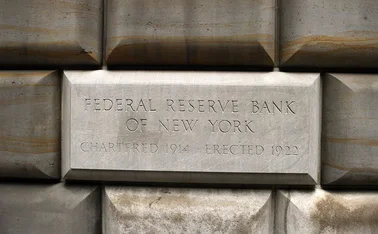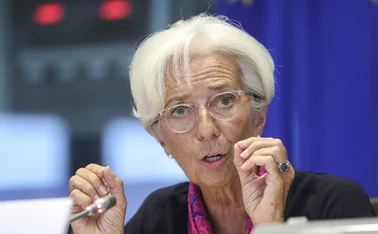
Why two degrees matters to central banks

Increasing public awareness of the perils of climate change and the political commitment of the international community to address these challenges, as embodied in the Paris Agreement – the central aim of which is to maintain a global temperature rise this century well below 2º Celsius. have intensified discussion on the role of central banks in addressing risks associated with climate change and in supporting the development of green finance.
This has not been a purely theoretical debate. A growing number of central banks and supervisors have already adopted green finance policies or guidelines, or have begun to incorporate climate risk into macro-prudential frameworks. This has given rise to the launch of initiatives such as the Sustainable Banking Network – a community of financial sector regulatory agencies and banking associations from emerging markets committed to advancing sustainable finance in line with international good practice – and the Central Banks and Supervisors Network for Greening the Financial System (NGFS). The latter was launched in December 2017 as a ‘coalition of the willing’ after the Group of 20 Sustainable Finance Study Group faltered over the US government’s hostility towards initiatives related to climate change mitigation and adaptation. The NGFS has grown from eight founding members to 36 members and six observers.
A call to action
In April, the NGFS published a progress report, A call for action, which highlights climate change as a source of structural change in the economy and financial system, and asserts that it therefore falls squarely within the mandate of central banks and supervisors to deal with its consequences.
The report issues six recommendations to the central banking and supervisory community:
- To integrate climate-related risks into financial stability monitoring and micro‑supervision
- To integrate sustainability factors into their own portfolio management
- To bridge data gaps and make available data relevant to climate risk assessment
- To build in-house capacity and collaborate within their institutions – with each other and with wider stakeholders – to improve understanding of how climate-related factors translate into financial risks and opportunities, and to encourage technical assistance and knowledge sharing
- To support the recommendations of the Task Force on Climate-related Financial Disclosures
- To support the development of a taxonomy that enhances the transparency around which economic activities contribute to the transition to a green and low-carbon economy, and those that are more exposed to climate and environment-related risks.
The NGFS report – and the agreement of all institutions involved on these recommendations – is a reflection of how the discourse has changed in a relatively short space of time. When Bank of England (BoE) governor Mark Carney presented his now-famous speech, Breaking the tragedy of the horizon, at Lloyd’s of London in 2015 – in which he highlighted the need for supervisors to address financial stability risks related to climate change – he received many sceptical responses and accusations of ‘mission creep’.
I have experienced this scepticism first hand. When I started a research project on climate risk and green finance with Bank Indonesia almost a decade ago, friends and colleagues at other central banks were flabbergasted as to why a central bank would be interested in such a topic. When I wrote and presented a paper in 2014 on the role of central banks in greening the financial system – which highlighted how climate-related risk can impact macroeconomic and financial stability, and argued that central banks and supervisors have a role to play in addressing this – the standard response was that central banks were already overburdened with other tasks and that this was simply not their job.
What central bank mandates say
The time when central bankers would risk their reputation by raising climate issues is over. A general consensus is emerging – as reflected in the NGFS report – that central banks and other supervisory bodies cannot ignore climate change. The impending climate crisis, which will have a potentially disastrous impact on our economies and requires urgent policy action, is undoubtedly changing the policy environment in which central banks are operating.
Climate change not only has significant implications for the core operations of central banks, it also poses the question of their broader role in addressing climate change-related risk and mitigation. However, there is no agreement on the extent to which climate change – or other environmental risks – should be incorporated into existing operational frameworks, or even whether central banks should play a supportive or promotional role in scaling up green finance. This may not be surprising, given the different histories and policy traditions of central banks in different parts of the world and the differences in their mandates.
How far central banks can go as an overall catalyst for mainstreaming green finance and incorporating climate risks into central banks’ core policy frameworks depends significantly on their mandates. A close investigation of the legal objectives of central banks is therefore essential to substantiate the ongoing discussion against the background of the increasingly pressing issue of responding to global warming. In a recent study prepared for an NGFS conference on the role of central banks in scaling up green finance hosted by the Bundesbank – renowned and respected for its conservative credentials – Simon Dikau and I investigated the extent to which climate-related risks and mitigation policies fit into the current set of central bank mandates and objectives. To this end, we conducted a detailed analysis of these mandates and objectives using the International Monetary Fund’s Central Bank Legislation Database, and compared these to current arrangements and sustainability responsibilities that central banks have adopted in practice.

Ulrich Volz serves on the Advisory Council of the Asian Development Bank Institute and the Board of Sufinda, the Sustainable Financial Data Initiative. He is also is founding director of the SOAS Centre for Sustainable Finance and an honorary professor of economics at the University of Leipzig.
Our analysis of 133 central bank mandates revealed that only 16 of the investigated central banks and monetary unions operate under a mandate that explicitly includes the promotion of sustainable growth or development as an objective. However, a further 38 central banks are tasked with supporting their governments’ national policy objectives, which – thanks to the Paris Agreement and the UN’s Sustainable Development Goals – should almost universally comprise sustainability. This means 54 central banks – or 41% of our sample – are mandated to either enhance the sustainability of growth and development or to support their governments’ potential sustainability policy objectives. This is usually conditional on not interfering with achieving their primary objective, which typically includes price stability.
However, our analysis also shows how climate risks may directly impact the traditional core responsibilities of central banks – most notably price and financial stability. The implication is that central banks will have to incorporate climate and mitigation risks into their core policy implementation frameworks to efficiently and successfully safeguard price and financial stability, even if their mandates make no explicit or implicit reference to sustainability. Not all central banks that have joined the NGFS have an explicit or implicit sustainability objective in their mandates. However, they have all accepted climate change risks are a source of financial risk and have thus concluded that ensuring the financial system’s resilience towards these risks lies within their mandates.
A role of central banks in promoting sustainability in the financial system and greening the economy is more contentious, not least because of the possibility of distortion that direct interventions into the market aimed at greening the economy might have, but also due to potential conflicts with central banks’ primary goals. It is therefore essential that a supporting role of central banks is covered by their mandates. The fact central banks have a large number of instruments to affect the allocation of capital towards green investment does not necessarily imply they should be tasked to do everything they possibly could. Starting with existing central bank mandates – which differ across countries and monetary areas – and also taking into consideration different central banking traditions, discussion is needed about the extent to which central banks should support their respective governments’ sustainability policies.
The eurozone – 2º, not 2%
The European Central Bank (ECB) and the European System of Central Banks (ESCB) provide good examples of climate change mitigation as a secondary goal. For the eurozone, Article 127 (1) of the Treaty on the Functioning of the European Union clearly defines price stability as the primary objective of the ESCB. However, it also states that “[w]ithout prejudice to the objective of price stability, the ESCB shall support the general economic policies in the Union with a view to contributing to the achievement of the objectives of the Union as laid down in Article 3 of the treaty”. Article 3 (3) of the treaty, in turn, includes the objective of “sustainable development of Europe based on balanced economic growth and price stability, a highly competitive social market economy aiming at full employment and social progress, and a high level of protection and improvement of the quality of the environment”. This implies the ESCB’s mandate does indeed include – inter alia and without prejudice to the objective of price stability – supporting the EU’s environmental objectives. This gives rise to the question of the extent to which political authorities and the public at large want the ESCB to play an active role in supporting environmental objectives. As discussions in the eurozone over the course of the euro crisis showed, it is not solely up to a central bank to interpret its mandate – ultimately, central bank policies need to be based on public and political support.
Benoît Cœuré, a member of the executive board of the ECB, recently addressed the underlying question of whether environmental issues are part of the ECB’s mandate, arguing that, while the treaty mandates the protection and improvement of the quality of the environment, it also opens up the question of “why the ECB should not promote industries that promise the strongest employment growth, irrespective of their ecological footprint”, thereby pointing to potentially conflicting objectives outside of the ECB’s core functions. On the issue of how climate change affects the conduct of monetary policy, Cœuré reasons it may “complicate the correct identification of shocks relevant for the medium-term inflation outlook … increase the likelihood of extreme events and hence erode central banks’ conventional policy space more often, and … raise the number of occasions on which central banks face a trade-off forcing them to prioritise stable prices over output”.
However, Cœuré argues that, generally, “there is scope for central banks themselves to play a supporting role in mitigating the risks associated with climate change while staying within [their] mandates”. Furthermore, regarding the threat of material climate-related risks, the ECB states, while it does not see these risks as a threat in the short term for financial stability in the eurozone, banks may be indirectly but substantially affected by “more frequent and severe extreme weather events or by the ongoing transition to a low-carbon economy”.
Central banking below sea level
The case of the Netherlands Bank’s (DNB’s) mandate and objectives offers further insights into the complexity of assessing a central bank’s green role based on its legal objectives. As part of the ESCB, the DNB’s objectives and tasks are determined by the same provisions of the treaty that determine the mandates of all national EU central banks – namely price stability, support for the general economic policies of the EU and to act in accordance with open-market principles. Despite the absence of sustainability from its statutory act, today the DNB is credited for having formally integrated sustainability into its operational framework. This was because of a deliberate decision in 2011 by the then newly appointed board of the DNB to update the central bank’s mission statement.
Against the background of the 2007–08 crisis, financial stability was considered by the DNB’s board to be a necessary central pillar of its mission statement to differentiate the new approach from the pre-crisis one, which had proven to create “prosperity [that] had turned out not to be sustainable”. The DNB’s mission statement – both as a central bank and financial supervisor – since 2011 requires the DNB “to safeguard financial stability and thus contribute to sustainable prosperity in the Netherlands”. At the time, the term ‘sustainability’ did not necessarily have the same connotation as today regarding climate change and the greening of financial systems. Nonetheless, this has led the DNB to incorporate sustainability considerations in most of its core operations, including economic research. Furthermore, the DNB recognises the necessity to contribute to sustainable development. While Frank Elderson, executive director of the DNB and chairman of the NGFS, is careful to say that “as a central bank and supervisor, we must not overstretch our mandate”, he has also emphasised that the DNB does consider ways to “impact investment decisions and credit allocation” and help “transform the financial infrastructure” to take into account the transition to a low-carbon economy to fall under its mission of “safeguarding sustainable prosperity”.
The green lady of Threadneedle Street
The BoE is an example of a central bank that makes no explicit reference to sustainability in its mandate, although it is – at least for the time being – a member of the ESCB and therefore bound by the same provisions of the treaty as all other central banks of EU member states. The bank’s proactive stance towards addressing climate risks has been condemned by some as being part of the bank’s mission creep of offering warnings on topics some consider too political. However, the BoE’s mandate obliges it to support the government’s economic policy and objectives for growth, which are set out in the Treasury’s annual remit for the Monetary Policy Committee. The latest remit explicitly and repeatedly sets out “sustainable and balanced growth” as the government’s economic policy objective. It could therefore be argued that the BoE is thereby also furnished with an indirect sustainability objective through supporting the government’s sustainable economic growth policy.
Carney strongly maintains the BoE’s responsibility to identify, warn against and mitigate any kind of threat to financial stability, including those from climate change-related risks. Regarding the BoE’s approach to mitigating climate risks or greening the financial system, Carney voiced distaste for a “surreptitious” approach or implicit guidance through central bank soft power and “against lowering capital requirements for a bank if they invest in a green project per se”. Instead, Carney expressed support for explicit climate change-related regulation or carbon pricing. Regarding a “promotional” role in enhancing green climate policy, Carney points to the limits of the mandated role of central banks, which, he maintains, cannot “substitute for governments in climate policy”.
From theory to practice
The responsibility of central banks to mitigate climate risks is becoming increasingly accepted, and attention is now shifting to the question of how central banks should operationalise this. There are no easy answers, but the recent NGFS recommendations are a good starting point. Central banks need to step up efforts to further enhance their models to include climate risks and set out a set of transition scenarios to help simplify the analytical challenge – not only for themselves but for the financial institutions they are supervising. Developing scenario analysis, including orderly and unorderly scenarios, and stress tests will help highlight where action is most urgently needed.
Certainly, more data is needed for developing a better-grounded, more granular and holistic view of the risks. However, given the great urgency to address climate risks, it will be more important for central banks to be roughly right now than to be precisely right later. Waiting for financial markets to address climate risks by themselves would be foolish. Strong leadership is needed by central banks and supervisors to make sure the financial sector will be in a position to weather the storm and contribute to an adaptation of our economies to the new climate reality.
This article draws on the study Central bank mandates, sustainability objectives and the promotion of green finance, co-written by the author and Simon Dikau, a PhD student at SOAS.
Only users who have a paid subscription or are part of a corporate subscription are able to print or copy content.
To access these options, along with all other subscription benefits, please contact info@centralbanking.com or view our subscription options here: subscriptions.centralbanking.com/subscribe
You are currently unable to print this content. Please contact info@centralbanking.com to find out more.
You are currently unable to copy this content. Please contact info@centralbanking.com to find out more.
Copyright Infopro Digital Limited. All rights reserved.
As outlined in our terms and conditions, https://www.infopro-digital.com/terms-and-conditions/subscriptions/ (point 2.4), printing is limited to a single copy.
If you would like to purchase additional rights please email info@centralbanking.com test test test
Copyright Infopro Digital Limited. All rights reserved.
You may share this content using our article tools. As outlined in our terms and conditions, https://www.infopro-digital.com/terms-and-conditions/subscriptions/ (clause 2.4), an Authorised User may only make one copy of the materials for their own personal use. You must also comply with the restrictions in clause 2.5.
If you would like to purchase additional rights please email info@centralbanking.com test test test







